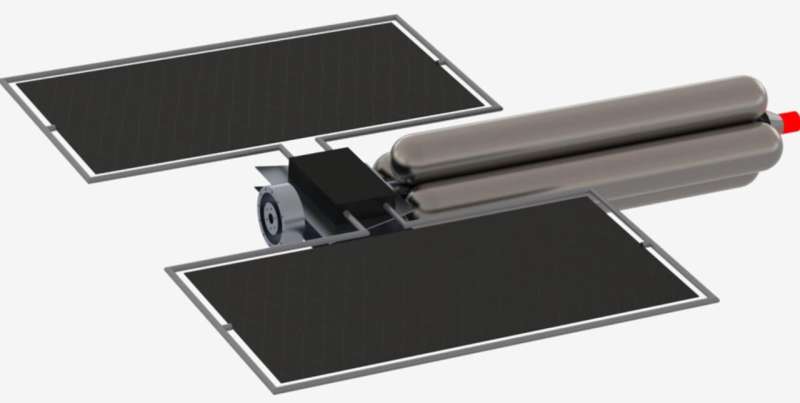"Radioisotopes have about the same amount of total energy stored in each atom," Morrison explained. "How quickly they release that energy depends on the half-life. Pu-238 has a half-life of 88 years, great for long missions to the outer solar system. The CAB batteries we are developing at USNC-Tech have shorter half-lives and possess a higher power density. In the NIAC, we are using a radioisotope with a five-year half-life and a power density over 30 times that of Plutonium-238 (Pu-238)."
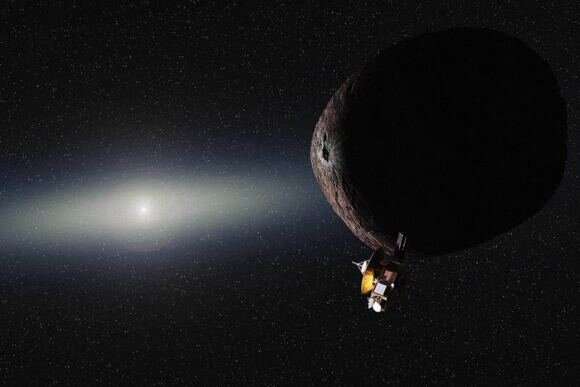
Pu-238 is NASA's usual nuclear power of choice for its spacecraft. It has been used for more than two-dozen very successful U.S. space missions—such as New Horizons, and the Curiosity and Perseverance Mars rovers—for their radioisotope power systems (RPS).
Pu-238, however faces some challenges. Only a limited amount of Pu-238 can be produced (a mere 14 ounces (400 grams) each year right now with a path toward 50 ounces (1500 g) over the next few years). This is just barely enough to meet NASA's future mission needs for its major programs.
Smaller programs and commercial companies face challenges not only because of the supply crunch, but also because Pu-238 is considered a special nuclear material with nonproliferation concerns. The radioisotopes in the CAB technology are instead commercial in nature, in fact many of them are heavily used in the medical industry for cancer treatment therapies.
"CAB batteries combined with electric propulsion would be very simple systems," Morrison told Universe Today. "This is all proven technology. The real innovation we are taking advantage of is the current regulatory environment. Before 2019, there was not a legal framework for commercial companies to use nuclear-based power. Now its officially sanctioned."
Presidential memo NPSN-20 in 2019 directed the Department of Transportation, and specifically the Federal Aviation Administration, to develop a tiered regulatory system that would allow commercial companies to launch nuclear-powered spacecraft.
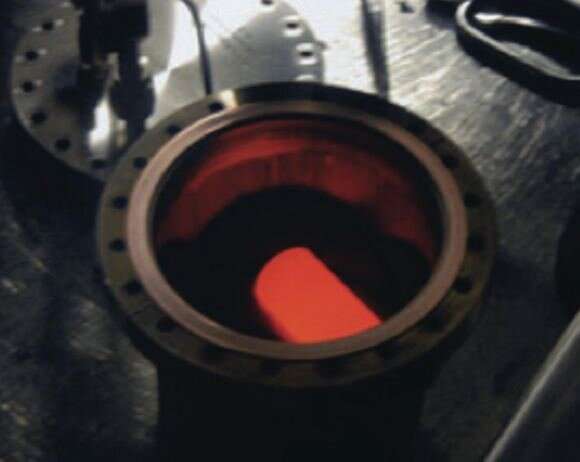
Morrison's proposal explains that the "CAB is easier and cheaper to manufacture than Pu-238 and the safety case is greatly enhanced by the CAB's encapsulation of radioactive materials within a robust carbide matrix. This technology is superior to fission systems for this application because fission systems need a critical mass whereas radioisotope systems can be much smaller and fit on smaller launch systems, reducing cost and complexity."
The CAB powered spacecraft, dubbed the "Extrasolar Express," has a fueled mass of just under one ton. SpaceX's Falcon 9, in contrast, can place over 20 tons into orbit. What would be done with all the extra room in the launch vehicle?
Morrison explains: "We can trade some of that mass for an extra speed boost away from Earth. In addition, some of the extra mass can be used to increase safety by including a large robust shield that protects the radioisotope and ensures no release even the worst-case launch accident. Once in a high orbit the shield can be ejected, and the spacecraft can travel unhindered on its mission."
Extrasolar Objects Now on the Scene
Before the two unusual and intriguing interstellar objects burst on the scene in our solar system ("Oumuamua in 2017 and Borisov in 2019) astronomers hadn't widely considered that wandering interlopers from other star systems might routinely pass by. Now, scientists calculate that an average of seven such objects pass inside Earth's orbit each year. Finding out more about these objects is an enticing prospect, since right now, all we can do is watch them with telescopes as they speed past us.
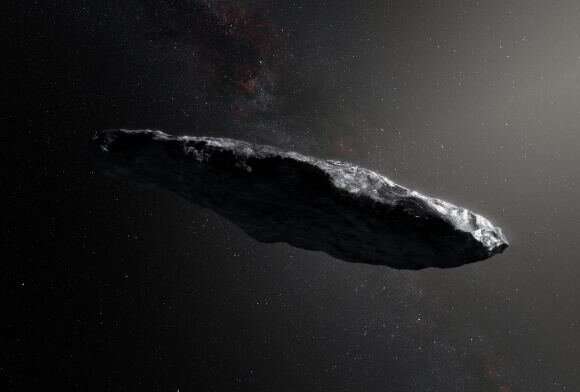
"These objects seem to come fairly close to us," Morrison said, "creating a mission to catch up to one is not a question of distance but a question of speed. That changes the equation as opposed to most missions, which need longevity. This is just a velocity problem, because you can intercept it and grab a sample and head back to Earth as long as you have the delta v to accomplish the mission."
Morrison explained the potential mission plan for the Extrasolar Object Interceptor and Sample Return : Launch the Interceptor spacecraft towards Jupiter and wait for a suitable extrasolar object to be detected.
"You might have to wait a year or so," he said, "but no matter what, you'll likely have to execute a plane change, because these objects don't come in on our ecliptic plane. The idea is to fly towards Jupiter, hopefully be in a good place to do a slingshot around Jupiter to get into the same plane orientation as the object."
The spacecraft could be similar in size and mass to the Dawn mission, which also used electric propulsion. But instead of Dawn's enormous solar panels, the CAB would provide enough power to create a speedy spacecraft. The Interceptor would need large heat rejection radiators, which (like Dawn's solar panels) would be the largest part of the spacecraft.
The details of the Sample Return portion are still being worked out, but perhaps something similar to the TAGSAM sample acquisition system employed by the OSIRIS-REx mission.
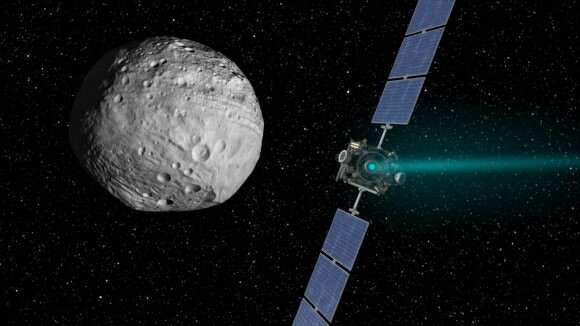
"I consider myself more of the "Scotty' of designing this Interceptor mission, but I'd get a Spock to help figure out the science part," Morrison mused.
CABs are manufactured using non-radioactive materials and then "charged" in a radiation field to create a specific radioisotope. Morrison said there are a lot of different radioisotopes of interest (for example Cobalt-60 and Thulium-170) and the technology can be catered to meet the power density and lifetime needs of a customer. Many of the CAB technology potential customers are terrestrial companies looking at underwater or underground applications.
"The technology is being pioneered for watt-scale lunar heating applications in the near-term, but the NIAC proposal represents the sportier version of the technology."
The NIAC Program bills itself as nurturing visionary ideas that could transform future NASA missions with the creation of breakthroughs, while engaging innovators and entrepreneurs as partners. Even if the Extrasolar Object Interceptor and Sample Return never makes it as a "real" mission, Morrison and USNC will continue to work towards making their CAB a viable power source for both Earth and space.
"I'm extremely grateful we received NIAC funding," Morrison said, "our company is already investing our own money into this technology. We'd like the CAB to be the Duracell battery of the future for anything that seems impossible—like long duration space missions, or in remote environments on Earth."
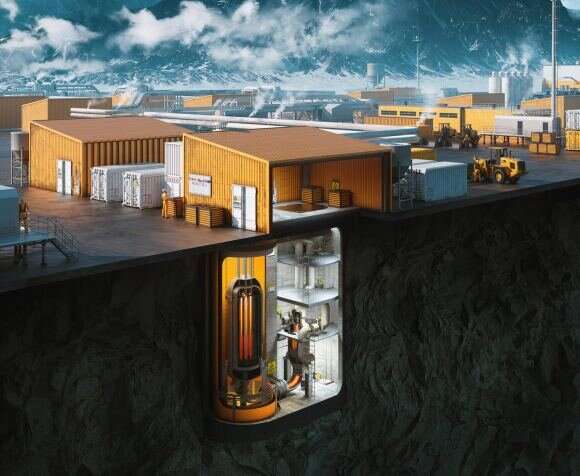
Beyond CAB batteries, the USNC company has been developing other nuclear technologies. "Radioisotopes used in CABs are hot rocks that produce consistent heat over a long period of time. A fission reactor is a different type of nuclear technology that can be turned on and off, up and down" explains Chris. USNC is developing a small modular fission reactor for use in the Canadian Arctic and this project is the main focus of the company's efforts.
"Canada spends many hundreds of millions a year on diesel for generators to power their small towns in remote regions ," Morrison said, "and they really want to change to using small modular reactors."
It turns out that power systems that work well for remote locations on Earth are good for remote locations in space, too. UNSC-Tech, where Morrison works, is a subsidiary of USNC focused on the aerospace industry and advanced terrestrial systems. USNC-Tech is developing fission propulsion technology with NASA and DARPA as well as a Lunar and Martian reactor dubbed the "Pylon reactor."
"USNC-Tech is designing the "LEGO' bricks for space nuclear technology. Space missions would use the same fundamental terrestrial technology arranged in a different configuration to accomplish brave new things in new places," Morrison explained. "The Extra Solar Express NIAC though is probably my favorite one."



